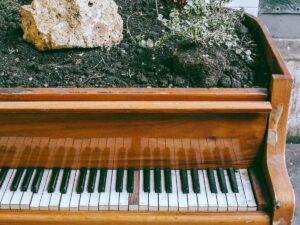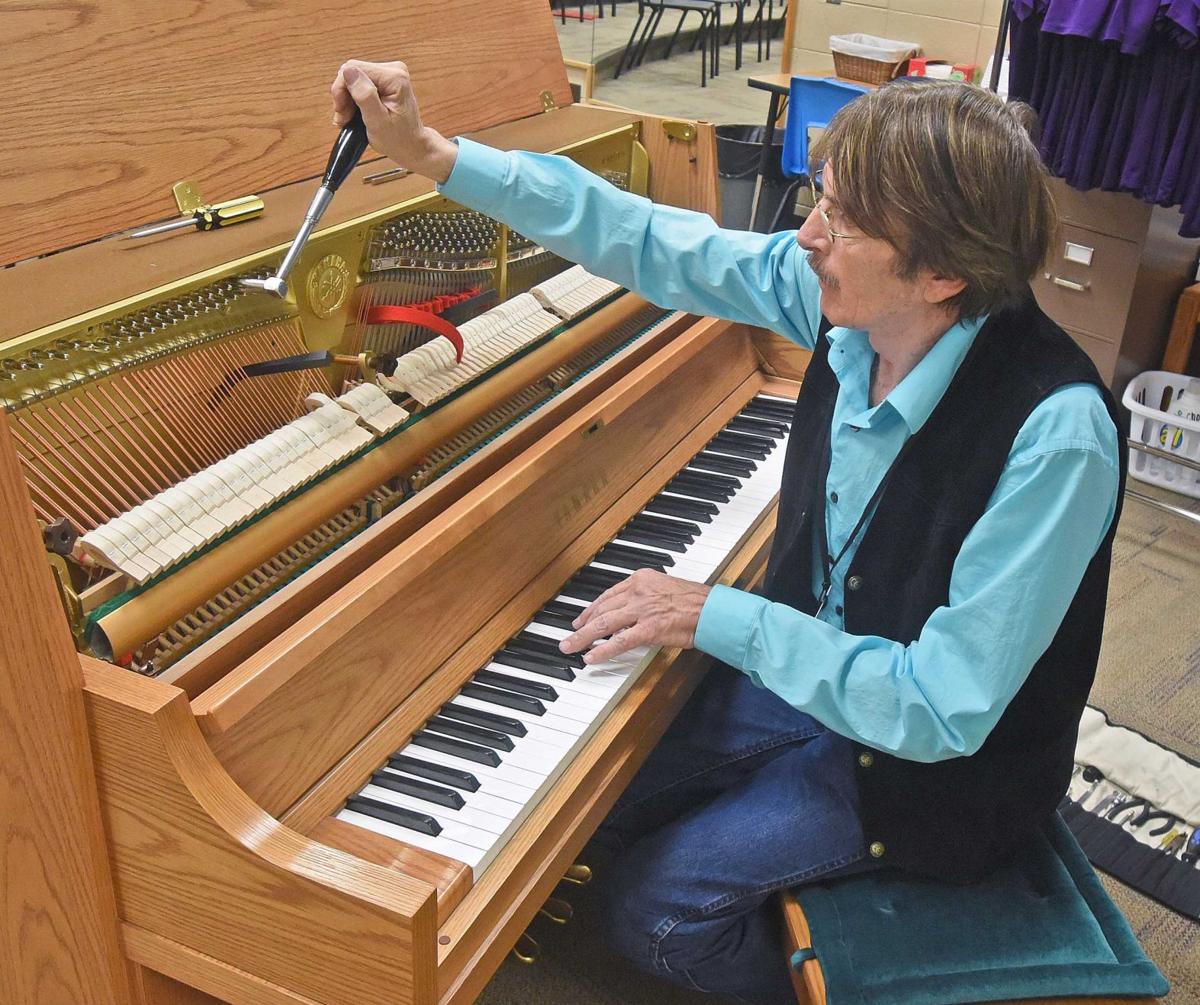If you have owned a piano for a couple of years, trust me when I say you will notice a change in its pitch. Most people still don’t know what a pitch is, but a pitch refers to the quality and sound type an instrument produces.
The pitch a piano offers might be a low pitch or a high pitch, and the change in pitch is always noticeable, whether it is a dramatic change in pitch or a minor change in pitch.
The pitch difference will get you worried, and you will start wondering where the problem lies with your piano.
You might wonder how your piano got broken or if it is losing its charm. You do not have to worry because none is the correct answer, but there are a couple of reasons why your piano is experiencing a change in pitch.
The complaints about the change in piano pitch are why you have our “how does a piano change pitch” review to show you why you are noticing a difference in your piano pitch and fixing the situation.

The first question that comes to mind when you think about a piano’s functionality is finding out how a piano gets to play a sound in the first place.
Learning how a piano produces a sound is the first step towards determining how a change in pitch happens on your piano and why it happens too. The sound production components of a piano are as follows;
Content Navigation
Strings
The piano features strings, and these strings produce sounds through vibrating at specific frequencies.
The tension, density, diameter, and length of your piano strings will determine the sound they will create. However, light and short strings under massive stress tend to vibrate vigorously, producing a sound with a higher pitch.
Producing low pitch sounds falls to long and bulky strings that are not under pressure and do not vibrate vigorously.
You should not confuse pitch for volume, and to make things easier for you, the squeak from a rat is an example of a high pitched sound. An example of a low pitched sound is the thunder sound you hear when it wants to rain.
Does A Piano Need Electricity
Hammers
The hammer keys will strike and create a note when a key gets pressed on a piano. Immediately it cuts off from the wire; the vibration will stop.
Soundboard
The soundboard is the part that tells you where the volume comes into play. The truth is the sounds a string produces is that loud for everyone to hear, so the soundboard’s job is to act as an amplifier.
Vibrations created by lines travel via a bridge to a large wooden piece, and the thin wood gets referred to as the soundboard.
Indeed, the soundboard has a significant role to play, and it will be of great importance for you to know that having minor cracks in this aspect doesn’t affect your piano’s tone and sound quality.
It might be difficult to notice these cracks, and significant measures are not needed to resolve the gaps.
Dampers
The job of dampers on a piano is to make sure the strings don’t vibrate. Lifting a finger away from the key means the corresponding damper will fall on the wire, and the soft felt of the damper will absorb vibrations until the sound fades away slowly.
All strings do not have the damper feature, and high-quality strings do not need a damper thanks to their vibrational energy that releases quickly.
The ability of high-quality strings to release vibrational energy quickly tells you the sounds will stop in a short time on their own.
Pedals
The right pedal is all dampers will be lifted together to ensure that notes get sustained. In this case, you will keep hearing sounds even after releasing the key.
This mechanism is responsible for stimulating vibration in strings that are yet to be struck, causing them to sound harmonious.
Generally, the resulting sounds will be richer and fuller, while the left pedal produces soft tones as all keys and hammers get shifted towards the right.
It operation causes the hammer to strike a few strings since their contact area fails to get to the wires, so they tend to produce soft sounds.
Notes get sustained using metal pedals, and whatever key you play when pressing the pedal will be held and maintained.
The middle pedal’s task involves lifting the dampers on modern pianos. Still, vertical pianos activate muting effects using its middle pedal to push the cloth found between the hammers and strings.
How Does A Piano Change Pitch?
Now that you know how a piano makes low and high pitched sounds, understanding how a piano changes pitch will no longer be difficult for you.
String Tension
The strings are the primary element of pitch generation in pianos, so they are affected significantly. The pitch of a piano will change when your piano strings lose their tension due to aging.
Humidity And Soundboard
When your soundboard gets too dry or too humid, the piano pitch gets altered. The acoustic structure of a piano is its soundboard, and if you are familiar with woods, you can tell that they react quickly to moisture.
When the climate gets dry, the wood on a soundboard gets flattened, and the tension in strings reduces, and this reduction in string tension and flattening of a soundboard wood results in a change in piano pitch.
Pitch Changing Device
A pitch changing device can also change a piano’s pitch, but all you need to do is ensure you put your piano’s output through the machine.
There are several technologies available to get this done, and there are devices responsible for making small pitch changes.
Other devices are accountable for making dramatic pitch changes, but any device you choose should depend on your requirements and personal preference.
What Does The Left Pedal On A Piano Do
How To Reverse A Change In Pitch?
Tuning is the surest way to deal with a change in pitch in pianos. Tuning means maintaining tension in piano strings, causing your piano to maintain its pitch.
Even though you can tune your piano yourself, it will be best to get a professional to do it for you.
Ensure that you tune your piano once yearly, and remember that climatic changes can also affect the pitch your piano produces. If you want to reverse pitch change or maintain a particular pitch, tuning should always be your go-to option.

